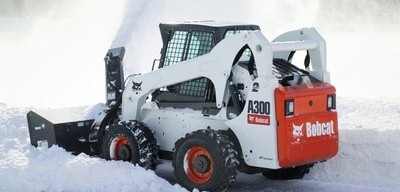Welcome to the second edition of the Tompkins Landscape and Irrigation Contractors' Newsletter. It seems many of you are interested in irrigation but are uncertain as of how we install the system and how this is going to effect your existing landscape. To hopefully shed some light on this situation we have produced our second newsletter and it is dedicated to the irrigation installation process. As a reminder, be sure to look on our site in the irrigation section because it too contains information on the irrigation installation process and product information that you may find very helpful. At Tompkins we follow a 10-step process for our installations:
Tompkins 10 Step Irrigation Process
- Site is visited and a water pressure and gallons per minute reading is measured. This will determine how many irrigation heads may be put onto a zone of heads and how far apart these heads can be to ensure maximum and even water coverage.
- The area is then marked off using small flags to simulate where each of the irrigation heads will be. This serves two purposes, one is to determine how many heads there will actually be and the second is to guide the pipe puller so he knows where the pipe needs to go. A proposal of work to be performed is submitted to customer at this time, and if the proposal is accepted and signed steps 3 -10 are completed. Dig Safe is also contacted to mark off all utility line.
- Our licensed plumber will install a backflow preventor (this prevents your irrigation water from backing up and contaminating your drinking water) and any other necessary plumbing requirements that your local area may require.
- Our irrigation staff begins the installation by putting 1-inch polyurethane pipe into the ground using a pipe puller machine known as a Ditch Witch. This pipe will allow the water to leave the house and make it to all of your sprinkler heads.
- Once all of the pipe has been pulled the next step is to dig the holes at each of the flags to allow the sprinkler heads to be connected to the pipe. Additional holes may need to be dug to connect some of the pipe together.
- When the holes have been completed the irrigation heads and pipe connection pieces are then tied into the polyurethane pipe.
- The irrigation valves that allow each zone of heads to turn on are connected and then wired so they may be tied into the controller clock.
- Once the valve wiring is completed the controller clock is then mounted, usually in the basement, and then wired to the valves. Our system is now completely connected, however, the job is not finished.
- To ensure the quickest lawn recovery and quality clean up our crew backfills all of the holes that we have dug and returns the sod to its original areas. We also clean up the small lines that the pipe pulling machine makes when it puts the pipe into the ground.
- In our final step we completely run your system from the controller clock to make sure all of the components of your system are functioning properly. We make any adjustments to the heads to make sure they water only the areas you want them to and to ensure they are spraying maximally and evenly. One of our employees will also give you instructions on how your controller clock and irrigation heads operates and how they may be adjusted.
Hopefully now you have a better understanding of the irrigation installation process. Usually this process is completed in one full day this may vary depending upon the size of the job. All information on the products we use and the benefits of having an irrigation system are located in the irrigation section of our site. Also feel free to browse our entire site for any information about the other services we provide. If you are interested in having some work performed on your home or business you may email us by using the contact us link on our site.
Class- orbit irrigation, toro irrigation, toro sprinklers
Winter Weather 2014
Winter weather is only weeks away!
Snow Plowing 2014-15
Facility and Property managers should be thinking snow right now.
Landscaping expertise
Need Landscaping Work? Give us a call!
Irrigation Startups
Schedule your sprinkler system startup today!
More Snow
The "mixed blessing" storm fading away, but concerns about dangerously cold weather remain
BBB - 2013 Award Winner
Certificate Of Customer Satisfaction Excellence
Who wouldn't take advantage of a discount
A discount will only offered when prepaying both Spring start up and Fall shutdown by March 1, 2014.
- Spring Is Coming
Tompkins now GSA Service Provider
May 7 of last year, Tompkins was awarded its GSA Contract.
NH Certified Green SnowPro
Advance Ice Melter
This winter melt the snow and ice off your driveway and walkway without damaging your lawn.
- Snow Melting Residential Project
Call Now!





